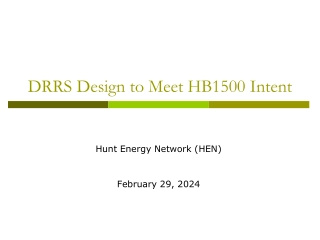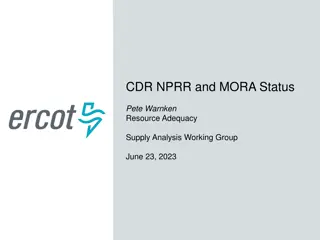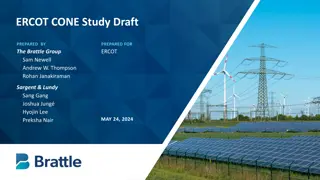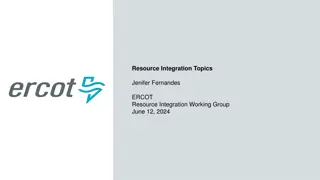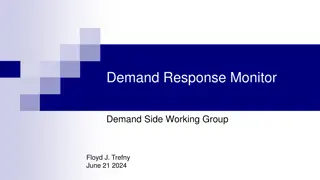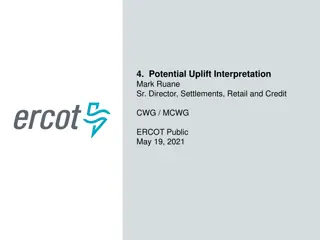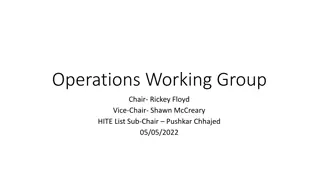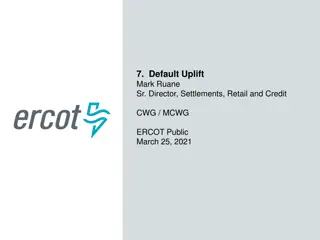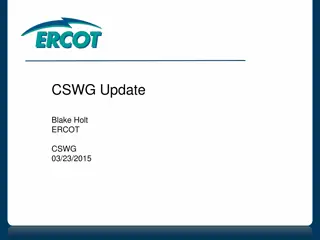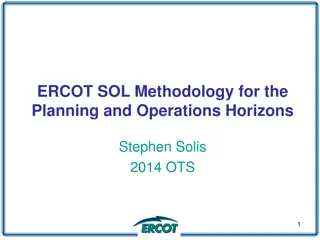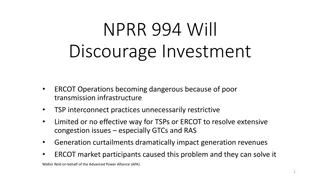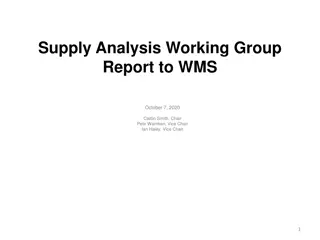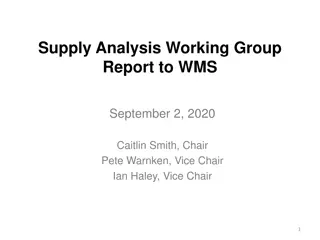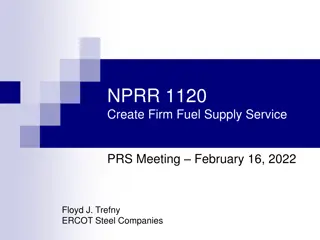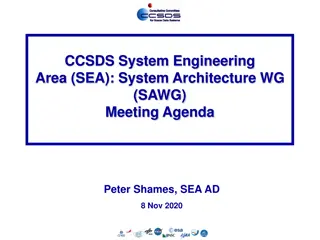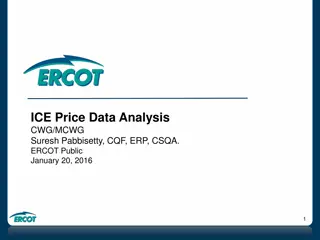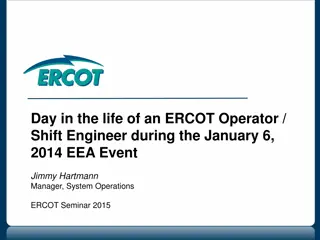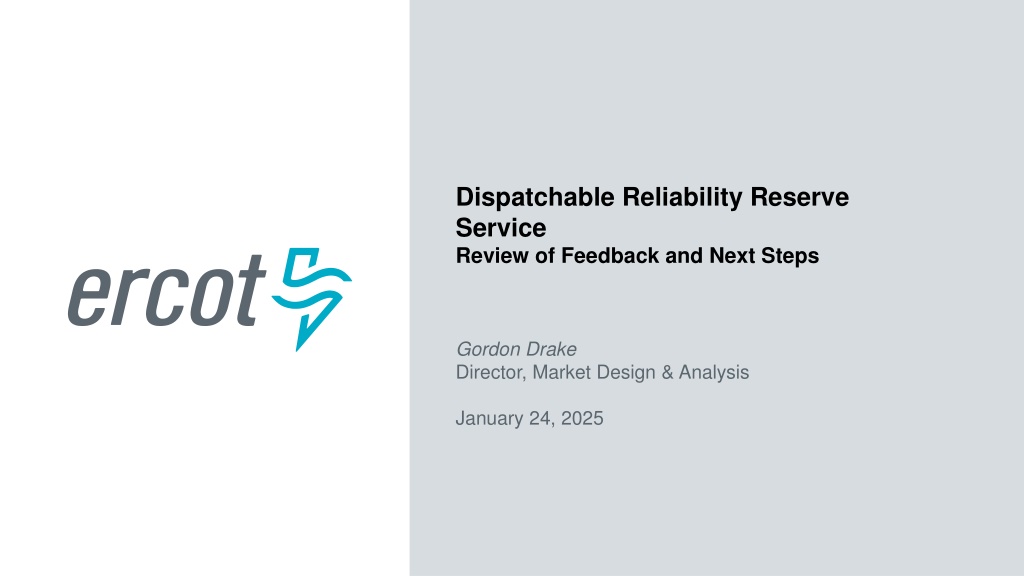
DRRS Redesign Recap and General Feedback on High-Level Concepts
Explore the evolution of Dispatchable Reliability Reserve Service (DRRS) through 2024, with a focus on stakeholder feedback and important design considerations. Dive into the nuances of operational uncertainty needs, resource adequacy, and market dynamics to shape the future of DRRS implementation.
Download Presentation

Please find below an Image/Link to download the presentation.
The content on the website is provided AS IS for your information and personal use only. It may not be sold, licensed, or shared on other websites without obtaining consent from the author. Download presentation by click this link. If you encounter any issues during the download, it is possible that the publisher has removed the file from their server.
E N D
Presentation Transcript
Dispatchable Reliability Reserve Service Review of Feedback and Next Steps Gordon Drake Director, Market Design & Analysis January 24, 2025
DRRS Redesign Recap Through 2024, ERCOT and stakeholders have been developing the concept of DRRS as an Ancillary Service. NPRR1235 had been the primary vehicle for specifying how the attributes specified in PURA 39.159(d) and other design elements will be incorporated in the Protocols. In discussion at SAWG and through feedback in the PUCT Ancillary Services study, some stakeholders expressed the view that DRRS should be designed to meet operational uncertainty needs as well as be designed to incentivize additional resource adequacy. As noted by PUCT staff in their response to feedback, Commenters were split on the topic of whether DRRS was intended to be a resource adequacy tool and the consequences thereof. At the December 19th Open Meeting, ERCOT was encouraged to pursue a design for DRRS that address operational forecast uncertainty while preserving optionality in the design to allow for future market development for resource adequacy. At SAWG meetings throughout the fall, ERCOT and other stakeholders expressed concern about the impact on effective price formation that would be seen if NPRR1235 was given a further resource adequacy mandate through increased procurement quantities. In November, ERCOT presented and asked for stakeholder feedback on two high-level design concepts for DRRS that could achieve its operational mandate with future flexibility 2 PUBLIC
General Feedback on High-Level Concepts Overall, stakeholders will need more detail on each of the design concepts provide further feedback and ultimately express a preference General feedback focused on: The relative technical complexity of implementing either option To what extent DRRS would be co-optimized with other energy and AS, particularly in the real-time market Whether it is feasible for DRRS, as a single Ancillary Service, to simultaneously satisfy both operational uncertainty needs as well as support resource adequacy The frequency with which the procurement quantity would be determined and whether the procurement quantities would be the same in both DAM and real-time Whether offline DRRS deployment would be reflected in the Reliability Deployment Price Adder Settlement impacts between DAM and RT awards and how imbalances will be settled Some of these areas of feedback require further discussion and decision, whereas others will simply require . A common theme to the feedback was the importance of ensuring appropriate real-time outcomes while addressing the statutory language. 3 PUBLIC
Feedback Themes on Specific Concepts Concept 1 Multiple Pass Under Concept 1, stakeholder feedback focused on several aspects of the design including: A better understanding of the incentives to offer DRRS in the first pass if it is allowed to overlap with energy and AS awards and what impact this would have on price formation Whether online DRRS would be subject to an offer floor requirement Eligibility for receiving DRRS settlement: only what is offered or all qualified DRRS resources? Concept 2 Release Factor Under Concept 2, stakeholder feedback focused on the following: The frequency on which the release factor would be determined and modified, if necessary Eligibility for receiving DRRS settlement: only what is offered or all qualified DRRS resources? We have collected all submitted questions and will address them throughout our subsequent design discussions. 4 PUBLIC
The Challenge of Real-Time Of all the DRRS design options developed so far (NPRR1235, Multi-pass, Release factor), there is a recurring theme: how to procure, price, and deploy both online and offline resources in real-time. Real-time issues with DRRS include: Is it possible to procure and price DRRS in a co-optimized way within SCED for online resources? For resources are offline and can only come online within 2 hours, what is the relevance of a SCED price? How can the RUC engine know of DRRS resources in order to deploy them in advance of non- DRRS offline resources, thereby satisfying the statutory requirement to reduce RUC by the amount of DRRS procured? What risk is there of inappropriately elevating or depressing other energy and AS prices when deploying DRRS? Much of the feedback we have received indicates that getting clarity on real-time procurement and pricing is necessary, independent of the design option employed. As such, our collective design efforts in the near term will emphasize solving these critical real-time issues and then turn our attention to further developing broader design options 5 PUBLIC
Next Steps As noted in previous DRRS design discussions, ERCOT has yet to rationalize the issues that arise from the competing attributes of the DRRS statutory language, specifically: Procuring DRRS on a real-time basis and how this relates to offline resources who may take up to 2 hours to come online The timeframe for pricing real-time DRRS and how this pricing can be co-optimized with energy and other AS Reducing RUC by the amount of DRRS procured ERCOT will be scheduling an in-person workshop in February to invite stakeholder input and discussion on these and other issues related to the real-time considerations for DRRS The date will be published shortly, and all stakeholders are invited to participate As we make progress on resolving these real-time issues, we will continue to refine the design of the Multiple-pass and Release factor concepts and schedule another workshop focused on these design options. Following the design options workshop, we will bring the discussion back into the ERCOT stakeholder process to review, comment on, and approve NPRR language 6 PUBLIC

